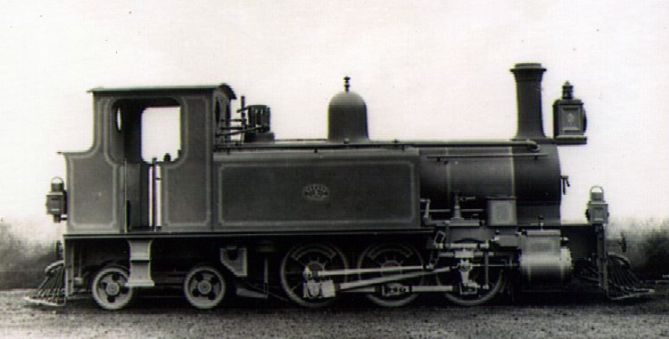Emu Bay & Mt Bischoff No. 3
It lacked power but did an amazing amount of damage to the track.
It didn’t carry enough coal or water to make the 76 km trip from one end of the line to the other.
It had so little sand capacity that, on a wet day (and there are lots of wet days in that part of Tasmania) the loco would run out of sand just 4kms after leaving the terminus
… and they were just some of the problems.
That was the Emu Bay and Mount Bischoff Railway’s No. 3. Neilson built this 0-6-4T loco in 1888 (b/n 3765) and it was intended to use this locomotive to haul trains over the full length of the company’s line and ease the burden on two equally uninspiring Hunslet 4-4-0 locomotives but instead ‘the Neilson’, as it became known, spent most of its working life shunting the yard at Emu Bay.
How could a locomotive so badly miss the mark when it came to meeting its design goals? Perhaps the fact that it was designed by an engineer who seemed to have problems believing that the grades, the curves and the general climate of the region could not possibly be as bad as what he had been told might have something to do with it.
E. G. Sheward was an English engineer who, despite never having been to Tasmania, had originally been employed by the Tasmanian Mainline Company and then gained employment as a consulting engineer with the Van Diemen’s Land Company. It was this company that originally built the line that became the Emu Bay and Mount Bischoff Railway and it was Sheward who had designed the first two Hunslet locomotives used on the line and they were not a success.
Despite numerous design problems, including such poor steaming ability that there was never enough steam to drive the locomotives and inject water into the boilers at the same time Sheward was again employed to design No 3.
The design was then put out to tender and Hunslet, Beyer Peacock, Dubs and Neilson and Co all submitted tenders. The lowest quote of $1,320.00 from Neilson and Co was accepted and the loco was completed in August 1888.
The loco arrived on the west coast of Tasmania in December and ran its first trial before the end of the year. It didn’t take long for the problems to appear and after just three weeks of use the permanent way inspector was complaining that the locomotive did more damage to the track in three weeks than the two older Hunslet locos had done in 18 months.
Despite the problems the loco still appeared to be in use in 1930 although by that stage ownership of No. 3 had passed to the Emu Bay Railway. The loco was sold to BHP for scrap in 19401.
Technical Details
Gauge: 1067mm (3ft 6in)
Wheel Arrangement: 0-6-4T
Cylinders: 33 x 45.7cm (13 x 18 in)
Tractive Effort: 76.8kN (17,260lb)
Weight: 24.384 tonnes (24 tons)
1One Tasmanian railway historian states that the loco was not withdrawn until 1941.
References
Cooley, Thomas C T. Railroading in Tasmania. L G Shea, Government Printer, Tasmania
Rae, Lou. The Emu Bay Railway. Lou Rae, Hobart. Harris Print, Burnie, Tasmania
